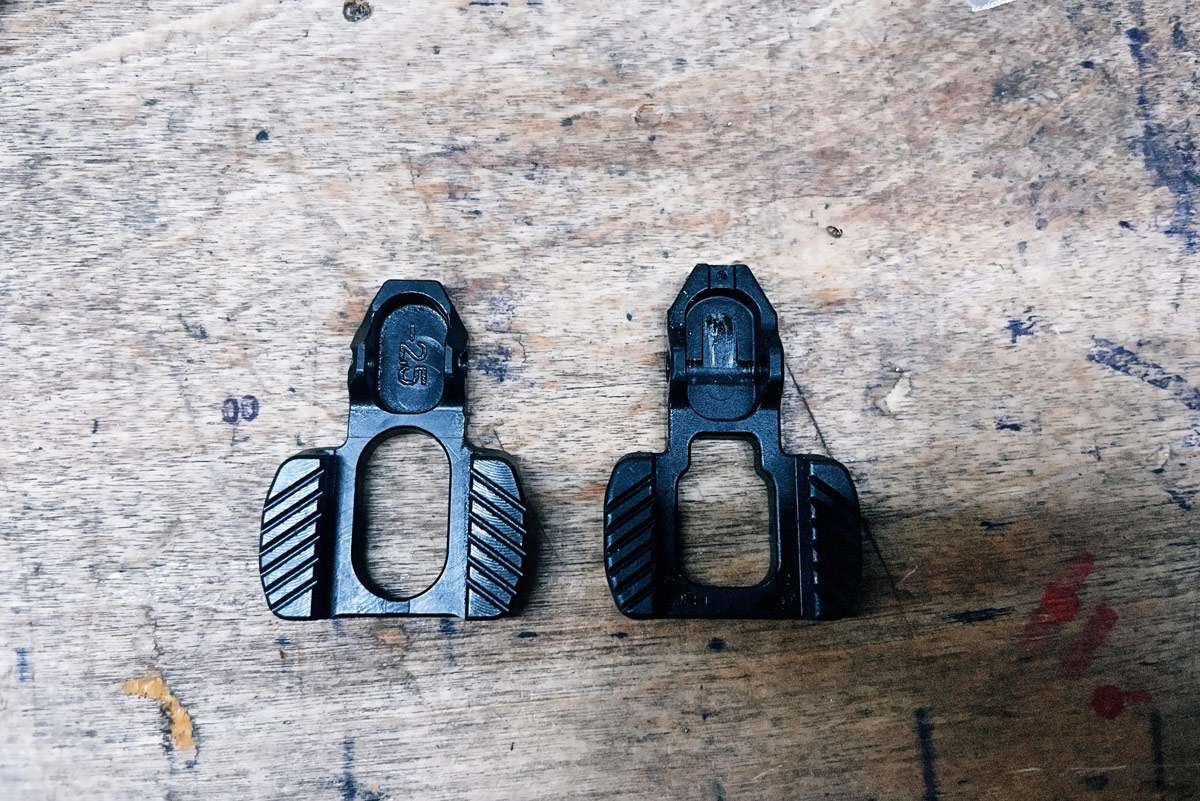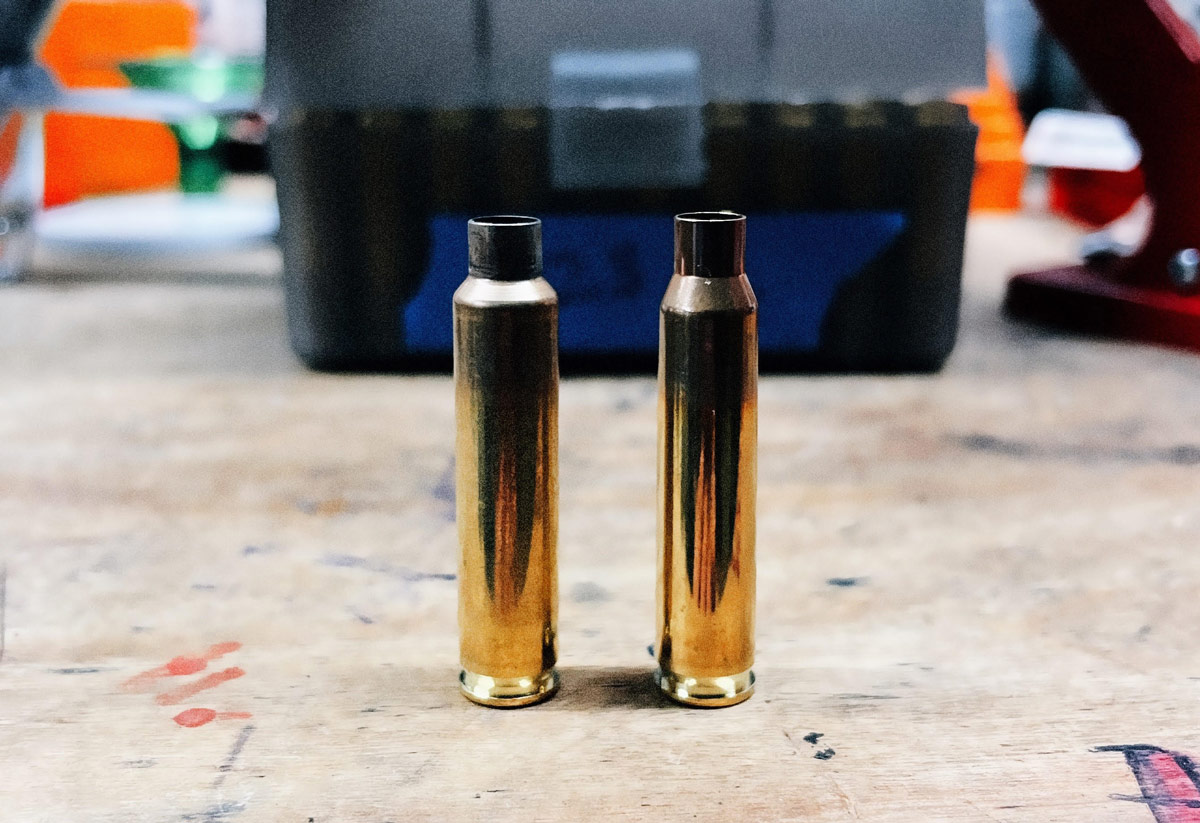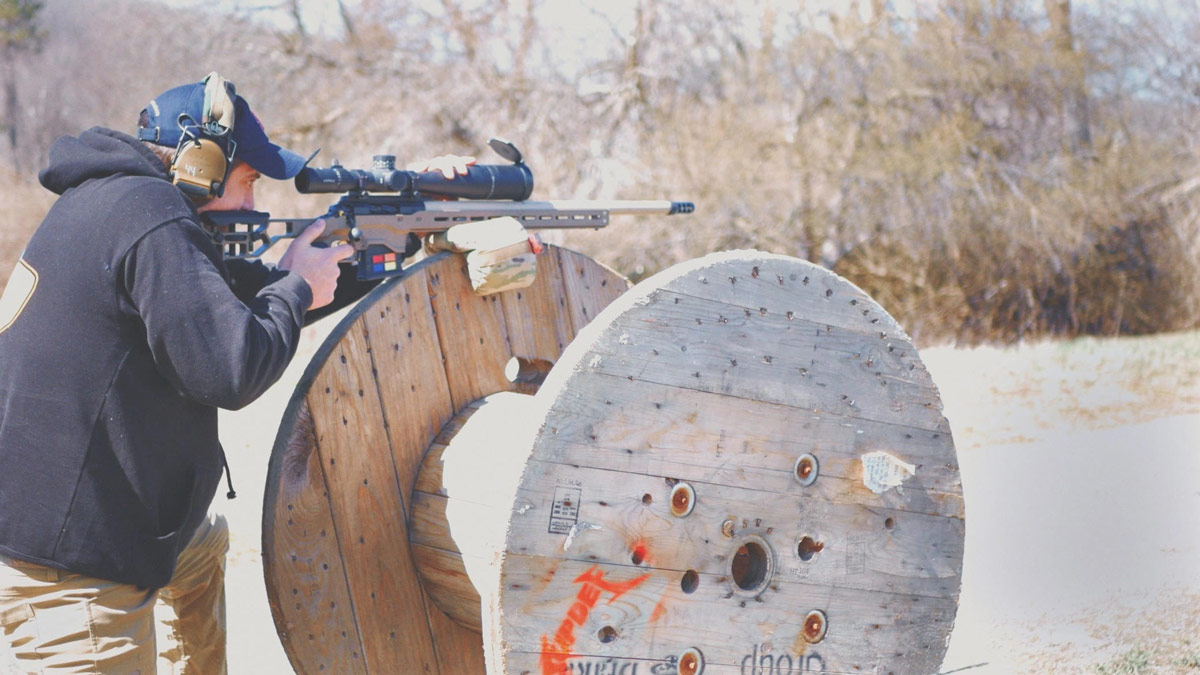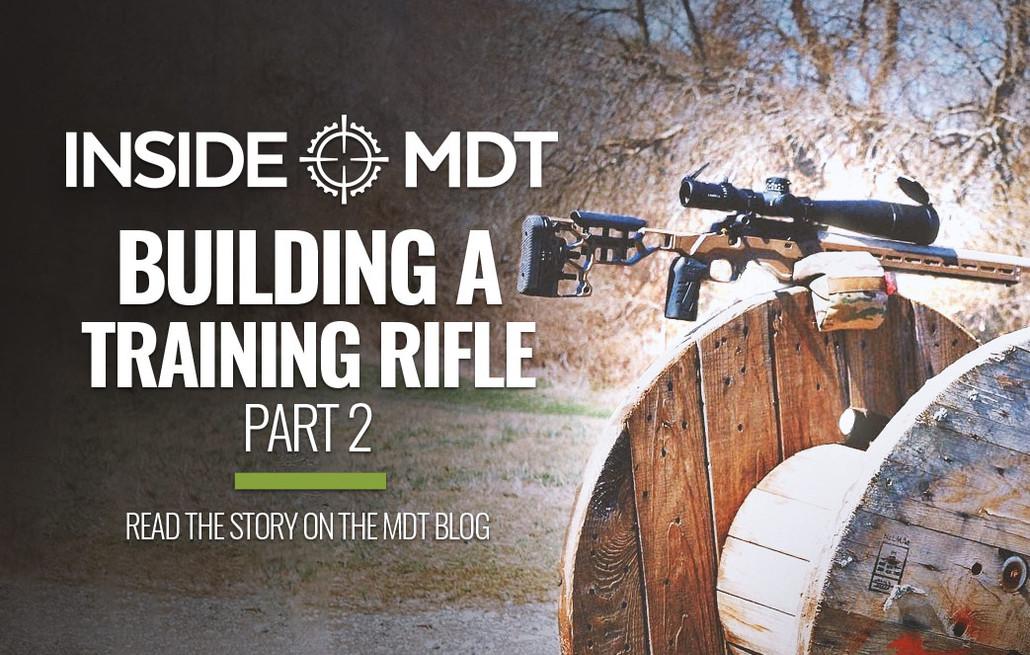Posted by William Maxwell on 2022 Apr 14th
BUILDING A TRAINING RIFLE - PART 2
Editor's note. This is a two-part article. You can read Part 1 here.
In Part 1, I finished load development for my 6mm Creedmoor and swapped out the MDT ESS for the MDT ACC Chassis. To my chagrin, I found that the Ultimatum Precision Deadline action wouldn't properly seat an AICS style magazine due to the release latch. (I later found out that the ESS I had was already configured for Ultimatum Precision Deadline action.) Fortunately, MDT makes a Deadline Compatibility Kit that includes a latch that can be swapped out to accommodate the Ultimatum Deadline.
This kit is necessary to use the Deadline action with an MDT chassis. You can see the difference between the original and Deadline magazine catch here.

MDT Deadline Compatibility latch on the left.
The installation of the compatibility kit was pretty straightforward: pop out the old pin, spring, and magazine catch and install the new spring, magazine catch and pin in reverse order.
NEW CARTRIDGE
As I touched on in Part 1, I wanted to try a .223 Remington variant for this trainer rifle, specifically the .223 Ackley Improved. There are a few reasons for this:
- Components. I don't want to run through all of my 6mm bullets. While availability is getting better, the Berger .243 bullets I use in the 6GT aren't the easiest to find. Also, .223 Rem and all its variants use about 60% of the powder of 6mm Creedmoor, and the performance isn't much different.
- Training Value. Using less powder and cheaper bullets allows for more rounds to be sent downrange for less. Also, there is even less recoil than the 6mm Creedmoor. Less recoil is always an upside.
- Variety is the spice of life; I always like trying something new. Nothing is more valuable in this game than experience, and I like having at least a little experience with as much as possible, in this case, .223 Ackley Improved.
- My mentor, Bill Marr (782 Custom Gunworks, RifleShooter.com), has had a lot of success with the .223 Ackley Improved and has told me that I need one. SPOILER ALERT: He was not wrong.
Some history on Ackley Improved cartridge. P.O. Ackley was a gunsmith in the earlier 1900s that developed countless wildcat cartridges by rechambering existing firearms and fireforming the ammunition to decrease body taper and increase shoulder angle. These changes resulted in a higher case capacity leading to higher velocities without added pressures.
Here's a picture showing the difference between .223 AI (left) and .223 Rem (right).

We used a Bartlein 1:7.5" twist .224 barrel with a Heavy Varmint (#8) contour for the barrel. We spun it up and chambered with a Dave Mansion Precision SAAMI spec reamer.
THE COMPLETED RIFLE
We touched on the action, chassis, and barrel, so let's go over the rest of the rifle. We used the Gold Edition of the Trigger Tech Diamond for a trigger. I have it set at about 1 pound; you can set it as low as 6 ounces. Admittedly, my experience with bolt-action triggers isn't that vast. But by all accounts, the Diamond seems to be the go-to. The muzzle device used is the Area 419 Hellfire. Nothing new here; I put them on everything. I haven't personally used a more effective brake between that and the MDT Elite muzzle brake. That being said, I do want to give the E.C. Tuner Brake a whirl one of these days. The rifle balances well without weights, and I attach my bipod to the integral ARCA rail.

More: Building a 6mm GT for Competition
For glass, I'm using a Leupold Mark 5 H.D. 5-25 in Badger rings. It's one of my favorite optics I've ever used, and I grabbed it off my 6GT. My 6GT has the new Vortex Razor HD Gen III 6-36x, which is fantastic!
NEXT STEPS
Now that I have a rifle ergonomically identical to my competition rifle. What's next? I'm going to be writing an entire article on the load development of this cartridge, but here's a little preview of some fire forming groups and preliminary load development groups.
Quick note: if you intend to seat an overall cartridge length (COAL) longer than 2.350", you must be careful which magazines you choose. I'm currently working with an MDT Polymer AICS Magazine which has more room than I will ever need.
This rifle will be seeing a ton of training time this year, but I will also use it in a match or two. With an 80 grain Sierra MatchKing, I am getting velocities in the 2900 FPS range. The icing on the cake with this rifle is that if you don't have any ammo loaded up, but you'd still like to go out and shoot, you can still shoot .223 Rem ammo VERY accurately. One of the coolest things about shooting .223 Remington through a .223 AI chamber is that the brass case gets fire formed to .223 AI as a by-product of shooting and training.

While I still love shooting a ''no-frills'' .308 Win, I love having a rifle that handles like my match rifle. Overall, this project exceeded my expectations, and I can't wait to get some more time on the trigger.
ABOUT THE AUTHOR
William Maxwell currently serves in the United States Army. After returning from his first deployment in 2015, he started building firearms and focused heavily on pistol and carbine training. In 2018 he fell into the rabbit hole of precision rifle shooting. He spends his free time competing, reloading, editing digital content and writing. He can be reached via Instagram @maddmaxxguns.


 CAD
CAD
 Euro
Euro
